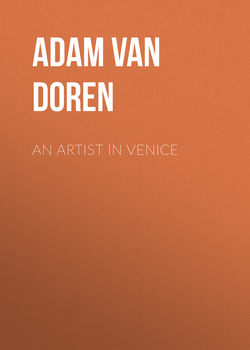Читать книгу An Artist in Venice - Adam Van Doren - Страница 10
На сайте Литреса книга снята с продажи.
ОглавлениеCHANNELING RUSKIN
Thank God I am here! It is the paradise of Cities!
– John Ruskin7
Along the expansive Zattere, a promenade that is much wider than most of Venice’s narrow streets, there is a stone plaque on La Pensione Calcina commemorating the art critic John Ruskin, who once lived there. Written in Italian, it gives the date of his residence as 1877. Few figures are more identified with Venice, or more controversial. His Stones of Venice, written in 1853, is a seminal work; opinionated and provocative, it is equal parts guide, polemic, education. Given that Ruskin was a Victorian, born at the start of Queen Victoria’s reign, it is all the more striking – in an era known for its almost pathological restraint – that his treatise is so unabashedly exuberant.
I first came across The Stones in a reprint published in 1985, with an introduction by Jan Morris, the well-known travel writer. It includes reproductions of Ruskin’s watercolors, which were omitted from earlier editions. Even a cursory reading of Ruskin’s text reveals that he encompassed his subject like few before him, or since. But Ruskin was not merely not of his age; he was at heart a Romantic, linked more closely perhaps to the English poet John Keats than to his contemporary William Morris, the artist, writer, and early Socialist. Ruskin was famous, even infamous, for wandering Venice with a notebook and ruler, measuring cornices, columns, and mullions like a surveyor; and if he required a scaffold, he built one himself. The city became his obsession. His wife, in fact, considering him insane, wrote in a July 1879 letter to her mother: “Nothing interrupts him; and whether the square is crowded or empty, he is either seen with a black cloth over his head making daguerreotypes; or climbing about the capitals covered in dust, or else with cobwebs exactly as if he had just arrived from taking a voyage with the old woman on her broomstick.”8
Fiercely determined to save Venice from itself, Ruskin abhorred the various “restorations” of the day, which he proclaimed were doing more harm than good. Venetians were woefully ignorant, Ruskin urgently insisted, of precisely what made their city beautiful. He tried in vain to discourage the city’s efforts to restucco its façades, which he thought arrested the natural course of decay. Through his essays, photographs, and drawings, Ruskin launched a small crusade to document what he could before the city was renovated beyond recognition. “He came in haste after [Daniele] Manin’s Revolution,” wrote Morris, “concerned that all was lost.”9
In the summer of 1986, during a summer spent abroad after college, I came to Venice without my parents for the first time. I was enrolled in a graduate program, affiliated with the University of Venice and Roger Williams College, to study the city’s architecture. Like the other twenty students, I was required to keep a detailed sketchbook, form a thesis, and find my own digs, which I was fortunate to locate in the Calcina soon after I arrived. Off the beaten track, my small hotel was a short walk from the Accademia and the Salute; and from my window I saw the Giudecca, a strip of land a half-mile across the water, with glacier-like cruise liners gliding past. I walked across nearby Campo San Giorgio every day on my way to the vaporetto. The tiny square was often empty, and it had a stone wellhead at its center. Built during the Byzantine period, this civic artifact was not only exquisitely beautiful and richly carved in stone, but it was also a remnant of a time when wells were integral to Venetian social life. I began to notice more and more of these throughout the city, and I recorded their salient differences in my notebooks. They were set low to the ground, and I often sketched them from a neighboring stoop.
